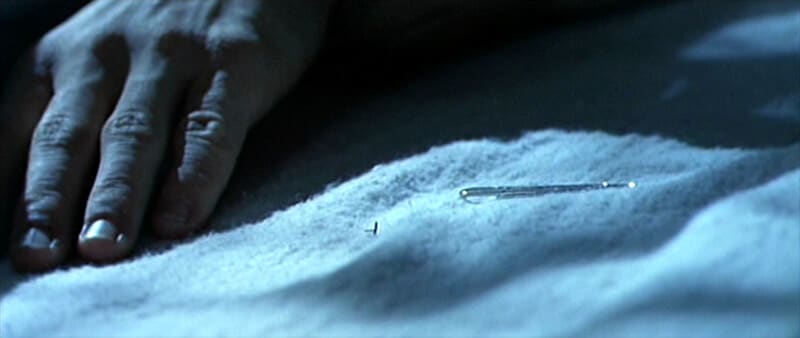
We know now that every thought has a size and weight. Each thinking mind seeks a material correlative, a partner, for the thought that bobs in its inky depths. The thing tumbling within this man’s thinking fingers slowly acquires the form of the thought that makes it tumble, just as the thought is smoothed and resolved by the simple symmetry of the thing itself. The thought is materialised in the object; the object gave the thought a material likeness. The fingers have run through coat pockets and the dusty mouths of drawers for something to give form and shape to the movement of the mind. The hand imitates the mind’s travel, picking things up or casting them aside. For now, this thing is a paperclip. This is the form the thought has taken. This is the size and weight of the thought in this man’s mind.
A paperclip. Not (for now) the lid of a pen with its corrugated teeth-marks, the tiny screw-on cap of a bullet of lip salve, or the wild maw of a bulldog clip. All of these things are available, depending on the nature of the thought. But for this thought, this recursive and reflexive pondering (a city bus, bumping in summer traffic), the double curl and sudden annulments of the paperclip give unrealised materiality to the meanderings of a waiting mind.
[…]
A paperclip performs its own demise, but continually. It’s what a thought about loss might look like. Even its etymology embodies a perpetual performance of hold and release. There are two roots to “clip”, held together in the body of the paperclip like errant sheets of paper. One is Old Norse: klippa, to cut/cut off. The other is an old English verb clyppan, to grip or embrace. So the object of the paperclip conjoins two opposing ideas: to bring together and to separate. And the paperclip’s doubled etymological identity is implied in its reluctance to perform, in its desire for solitude. Paperclips are synecdochical objects in that they are both suggestive and lonely, an idea best expressed in their whimsical French translation, trombone. (Lonely, too, is the trombone’s sound, the cry of a train hurtling through a dark landscape). Beyond their visual kinship, a paperclip and a trombone share certain associative qualities. Their etymologies contain a similar doubling: the fifteenth-century word sackbut, predecessor of the later term, used to refer to a trumpet with a slide, alludes to both pushing (sacquer) and pulling (bouter), both Middle French. Pushing/pulling, cutting/gripping: the paperclip vacillates in its double identity between doing and being, between energy and matter. Look at the way it moves in your hand, a thing of extreme lightness and complex intestinal structure, the inverse of Borges’ ‘shining metal cone…so tiny and at the same time so heavy’ [i], but like it, too: the paperclip seems too recondite for its function. There is both too much there, and not enough: a message in a lost language.
The fat man falls backwards into a bin: a trombone parps a sliding accompaniment. As he falls, his papers fly out of his hand, suddenly loosened by the paperclip that barely held them. He’s on his way to give a paper at a conference on geopolitics or the future of the novel. Around his waggling legs, his papers cascade gently to the ground, as a gathering horseshoe of onlookers looks, points, laughs, starts taking pictures. (He is known, but not by them; this is not a fan thing). His glasses slip from his nose and clatter on the unreachable pavement; the laughing world around him is soft colour seen through water. Rocking the bin forward and back, he gradually sits himself more deeply and intractably into the bin, his suit now palpably sodden with the mulch of rind and cans. He is there for a long, long time.
- [i] Jorge Luis Borges, ‘Tlön, Uqbar, Orbis Tertius’ [in Ficciones, Grove Weidenfeld, 1963]
- The complete essay on paperclips is to be found in the debut issue of RONG-WRONG, a new publication featuring essays by Owen Hatherley, William H Gass, Kodwo Eshun and Stephen Connor, among others.